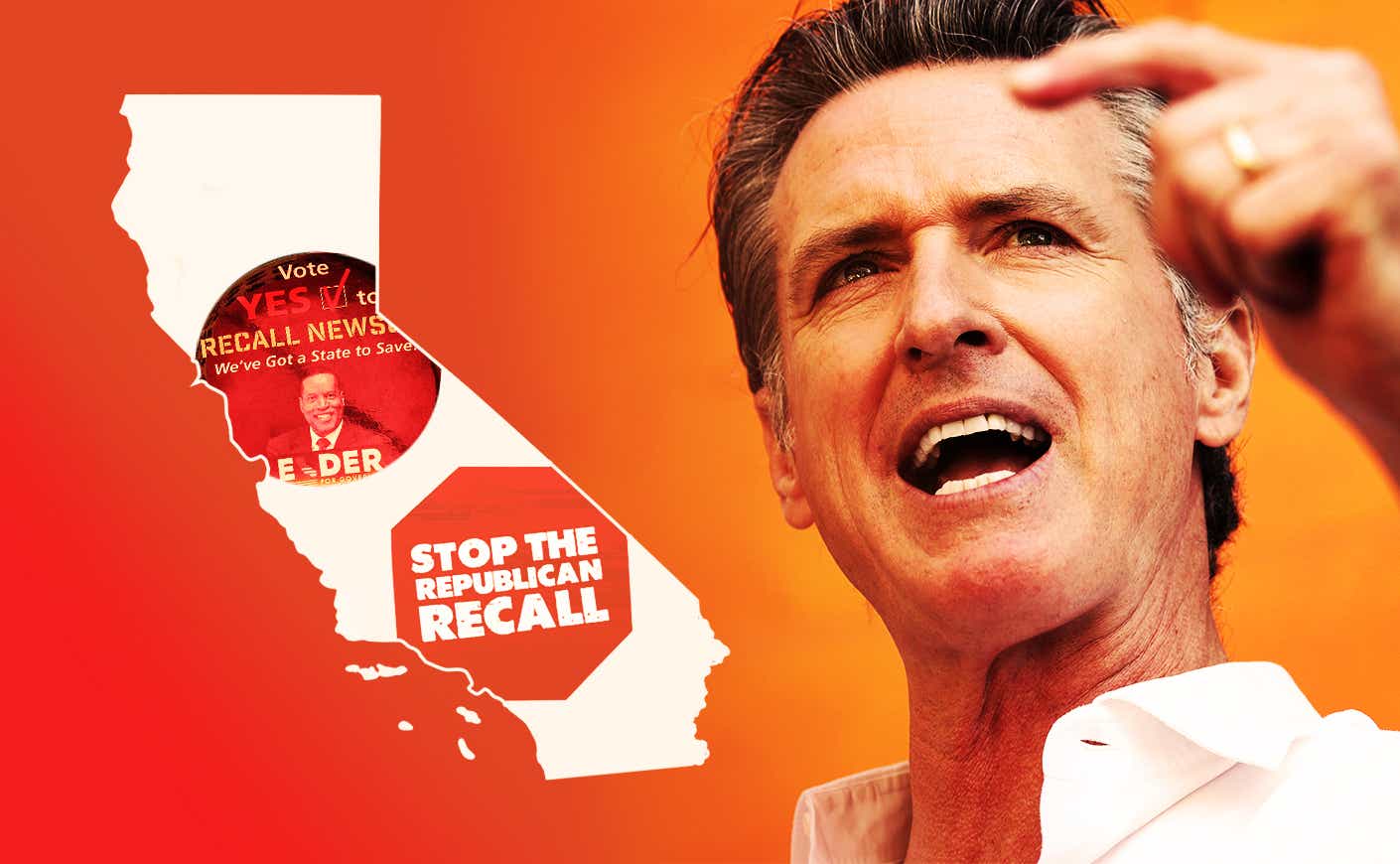September 14th is the moment of truth in California, as voters decide whether to recall Democratic Gov. Gavin Newsom — and if they do, who they'll put in his place. To get a better understanding of what led to this situation (and what's likely to happen), Katie checked in with her good friend Brian Goldsmith, a political expert and media consultant in Los Angeles who's been watching this race closely. Watch their full conversation below.
What led to this recall election?
Goldsmith pointed to a "perfect storm" of factors that began with Newsom's strict Covid-19 safety protocols, which lost popularity as the pandemic worsened. Then Newsom caused a firestorm by violating his own rules when he dined at a swanky restaurant while telling Californians to stay home.
From there, Republicans who saw an opportunity to strike brought in a surge of national money in support of ousting him. "That's really important," Goldsmith said. "People think that these signatures just end up on petitions organically. There's some of that, but most of the time it's paid signature-gatherers going and harvesting signatures."
Finally, a judge extended the deadline for supporters of the recall to get all the signatures they needed, which was critical. "Even with all the other factors, this thing was going to die without that deadline extension," Goldsmith said.
How does the recall work?
The ballot includes two questions. First up is whether Newsom should be recalled. If more than half of voters say yes, Newsom is out, taking us to the second question: Who should replace him? If Newsom is recalled, the top vote-getter in that second question will become governor — even if they've only earned a small share of the overall vote.
Who's running against Gavin Newsom?
In a field of Republicans that includes former Olympian Caitlyn Jenner, Newsom's leading threat is conservative talk show host Larry Elder. But Goldsmith told us Elder is "the gift that keeps on giving" for Newsom: Elder's continued support for Donald Trump (in a state where the former president is deeply unpopular) has framed the race as a big-picture partisan battle, energizing Democratic voters who may be mixed on Newsom personally but wouldn't want the GOP to take control.
Has a recall like this worked in California before?
Yes, once. That was in 2003, when Arnold Schwarzenegger replaced Gray Davis. But Goldsmith pointed to some key differences this time around: No candidate is as famous or beloved as a movie star like Schwarzenegger, and the state has grown even more Democratic since then.
"It's important to remember that in 2000, which was the last presidential election before the 2003 recall, Gore beat Bush in California by 12 points," Goldsmith said. "In 2020, the last presidential election before this recall, Biden beat Trump by almost 30 points. So the landscape for Republicans — for an anti-Democratic initiative — is far different today than it was then."
What is the expected result?
The format of the recall makes it a tricky race, but Goldsmith says at this point the outcome seems easy to predict. "If Newsom loses, he's in really bad shape, but I don't think that's going to happen," Goldsmith said. "The polling overwhelmingly shows him with the big advantage. We all have the 2016 PTSD, where people assured us over and over again that Donald Trump would not be elected, and yet that happened, so we'll see what actually transpires. But I would be very, very surprised if Newsom didn't win big."
When will we know for sure?
It depends on how close the race ends up being. During the 2020 election, California had counted only two-thirds of its ballots on election night, and for this recall, ballots postmarked on time will continue to be accepted for a week after election day. "Safe to say, it could take at least a few days," Goldsmith said.
Stay tuned — and check out my full chat with Brian here!









